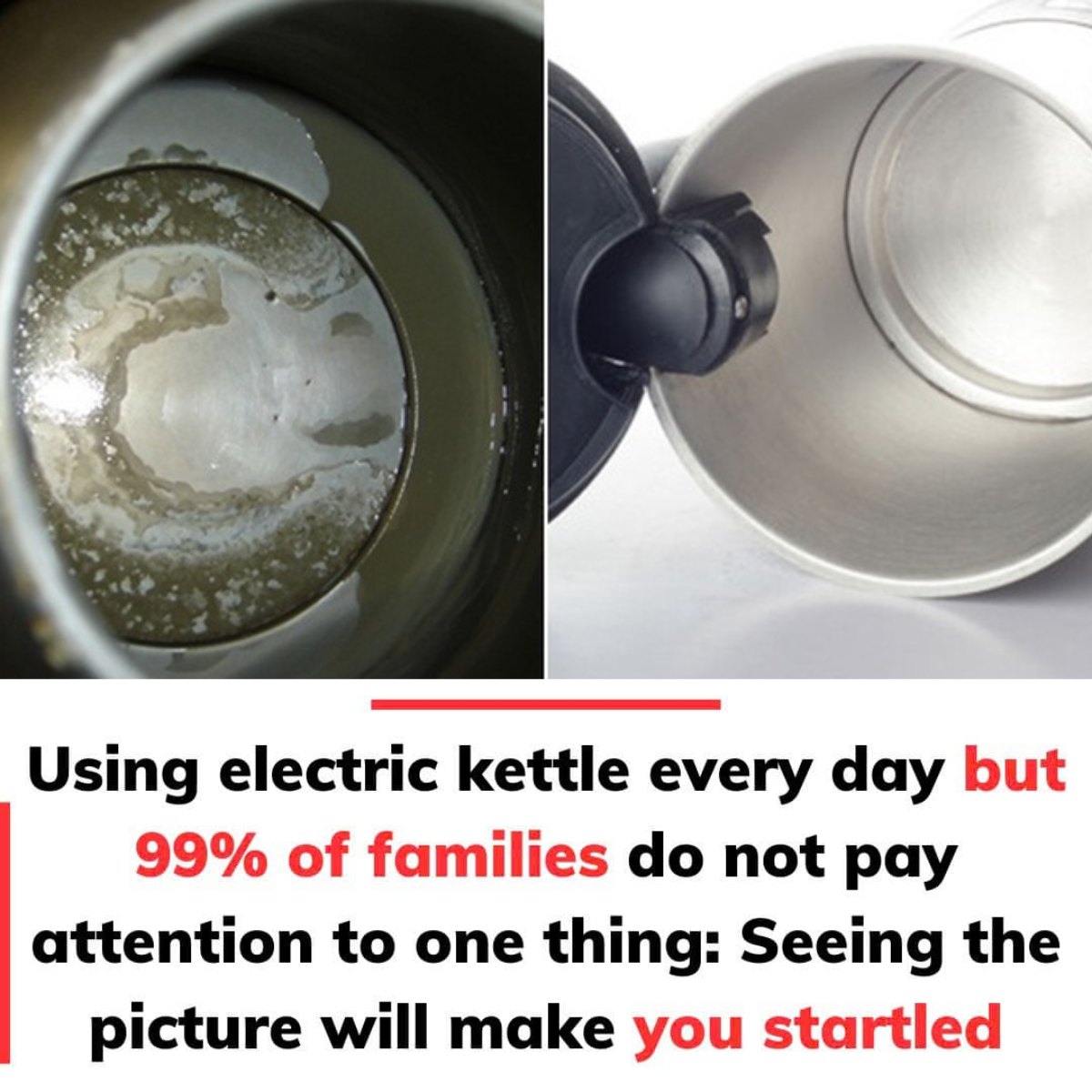In today’s fast-paced world, electric kettles have become an essential part of almost every household. Whether it’s for brewing tea, making coffee, or preparing instant noodles, this small yet powerful appliance sees daily use in kitchens across the globe. However, while most people rely heavily on their electric kettles, there’s one critical aspect of ownership that often gets overlooked: regular cleaning. It’s a simple task, yet surprisingly, many people fail to recognize its importance.

Recently, a viral discussion on a popular home appliance forum shed light on the often-ignored issue of electric kettle maintenance. Users shared shocking images of kettles with thick layers of white and yellowish deposits coating their interiors. These unsightly buildups, primarily found at the kettle’s base, are not just visually unpleasant but also pose potential health and functional risks. Experts explain that these stubborn deposits are primarily caused by minerals like calcium and magnesium found naturally in tap water. When water is repeatedly boiled and evaporated in the kettle, these minerals crystallize and form limescale, creating the chalky residue that many have observed.
What’s even more concerning is that many people assume boiling water is enough to keep their kettles clean and bacteria-free. After all, boiling water kills germs, right? While it’s true that high temperatures can eliminate some bacteria, they do nothing to address mineral buildup or prevent other impurities from accumulating inside the appliance. Over time, these deposits can become a breeding ground for bacteria and mold, particularly if water is left sitting in the kettle for extended periods. The buildup can also affect the taste and smell of the water, leaving an unpleasant metallic or musty flavor in your tea or coffee.
Beyond the hygiene concerns, mineral deposits also have a significant impact on the kettle’s efficiency. A layer of limescale acts as an insulating barrier between the heating element and the water, making it harder for the kettle to heat efficiently. As a result, the appliance has to work harder, using more energy and taking longer to bring water to a boil. This not only increases electricity costs but also puts unnecessary strain on the kettle’s heating element, which can lead to premature failure.
To prevent these problems, it’s crucial to incorporate regular cleaning into your routine. Fortunately, maintaining an electric kettle isn’t a complicated task. One of the simplest and most effective methods is using a mixture of water and white vinegar. Fill the kettle halfway with equal parts water and vinegar, bring it to a boil, and let it sit for about 20 minutes. The acidity in vinegar works wonders in dissolving stubborn limescale deposits. Afterward, empty the kettle, rinse it thoroughly with clean water, and boil fresh water once or twice to ensure any vinegar residue is completely removed.
Alternatively, specialized descaling products designed specifically for electric kettles can also be used. These products are widely available and often come with detailed instructions. For routine maintenance, it’s recommended to descale your kettle at least once a month, depending on how frequently you use it and the hardness of your water.
Another often-overlooked step is drying the kettle after use. Leaving water sitting in the kettle, especially overnight, accelerates limescale buildup and creates a damp environment where bacteria can thrive. After each use, make it a habit to empty the kettle completely and leave the lid open to allow proper ventilation and drying.
In addition to regular cleaning, paying attention to your water quality can also make a difference. If you live in an area with particularly hard water, using filtered water in your kettle can significantly reduce mineral deposits. Not only will this minimize the need for frequent descaling, but it will also improve the taste of your drinks.
At the end of the day, an electric kettle is a hardworking kitchen companion, and like any frequently used appliance, it deserves regular care and maintenance. Ignoring routine cleaning might not seem like a big deal initially, but over time, it can lead to serious hygiene concerns, reduced efficiency, and even costly repairs or replacements.
By dedicating just a few minutes each month to cleaning your electric kettle, you’re not only extending its lifespan but also ensuring that every cup of tea or coffee you brew is fresh, clean, and safe to consume. So, the next time you pour water into your kettle, take a moment to consider its condition. A little care goes a long way in keeping this essential kitchen tool in top shape. Clean your kettle regularly, and you’ll not only save energy and money but also enjoy better-tasting beverages every day. After all, a clean kettle isn’t just about hygiene—it’s about elevating your daily routine and prioritizing your well-being.





